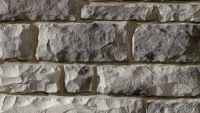September 23, 2012 9:00 AM CDT
The Lawrence Berkeley National Laboratory (LBNL) has a new software tool for building professionals studying all phases of the complete life cycle of a building, from acquisition of materials to construction, the use of the building, and finally demolition and end of life to determine its true environmental footprint.
B-PATH model (Berkeley Lab Building Materials Pathways) estimates the energy, resources, and environmental impacts associated with the manufacture of structural materials; their effects on the energy use of a building during operation; and their impacts when the building is ultimately demolished and its constituent materials are reused, recycled, or disposed. Users can model the use of a range of typical structural building materials like concrete, steel, and lumber from their production, transportation, and construction until their end-of-life processes. It also lets users define which fuels and how much electricity is used in each of these processes, throughout the lifecycle.
“Minimizing the environmental impacts of a building throughout its entire lifecycle is a promising way of reducing the energy use and greenhouse gas emissions of buildings,” says Eric Masanet, the leader of the team that developed B-PATH. “The key is having a tool grounded in sound science to perform a lifecycle analysis – the data analysis and systems mass and energy balance modeling techniques to estimate the inputs of fuels, materials, and resources (and outputs of pollutants and waste) associated with all relevant processes in the lifecycle of a product or service.”
The model incorporates both current practice and best practice methods of manufacturing and construction to determine how they affect energy use. The user can tailor results to specific U.S. regions, which vary by climate, local and regional characteristics in materials supply chains, construction practices, and end-of-life pathways, as well as in the mix of fuels for electrical power supply sources and volume of water consumption.
Read more about B-PATH and download the model at eetd.lbl.gov/news/article/15177/quantifying-the-environmental-impact-of-structural-materials-with-b-path.
Software tool to measure impacts of structural materials
For building professionals studying all phases of the complete life cycle
By Masonry

Commercial building under construction
Architects, engineers, and urban planners are consistently seeking to access and manage the environmental impacts the buildings they produce. Although the operational energy of commercial structures in the United States accounts for approximately 35 percent of total electricity consumption, the materials used to build the building also are scrutinized for their environmental impact.The Lawrence Berkeley National Laboratory (LBNL) has a new software tool for building professionals studying all phases of the complete life cycle of a building, from acquisition of materials to construction, the use of the building, and finally demolition and end of life to determine its true environmental footprint.
B-PATH model (Berkeley Lab Building Materials Pathways) estimates the energy, resources, and environmental impacts associated with the manufacture of structural materials; their effects on the energy use of a building during operation; and their impacts when the building is ultimately demolished and its constituent materials are reused, recycled, or disposed. Users can model the use of a range of typical structural building materials like concrete, steel, and lumber from their production, transportation, and construction until their end-of-life processes. It also lets users define which fuels and how much electricity is used in each of these processes, throughout the lifecycle.
“Minimizing the environmental impacts of a building throughout its entire lifecycle is a promising way of reducing the energy use and greenhouse gas emissions of buildings,” says Eric Masanet, the leader of the team that developed B-PATH. “The key is having a tool grounded in sound science to perform a lifecycle analysis – the data analysis and systems mass and energy balance modeling techniques to estimate the inputs of fuels, materials, and resources (and outputs of pollutants and waste) associated with all relevant processes in the lifecycle of a product or service.”
The model incorporates both current practice and best practice methods of manufacturing and construction to determine how they affect energy use. The user can tailor results to specific U.S. regions, which vary by climate, local and regional characteristics in materials supply chains, construction practices, and end-of-life pathways, as well as in the mix of fuels for electrical power supply sources and volume of water consumption.
Read more about B-PATH and download the model at eetd.lbl.gov/news/article/15177/quantifying-the-environmental-impact-of-structural-materials-with-b-path.
About the Author
Masonry, the official publication of the Mason Contractors Association of America, covers every aspect of the mason contractor profession - equipment and techniques, building codes and standards, business planning, promoting your business, legal issues and more. Read or subscribe to Masonry magazine at www.masonrymagazine.com.


















